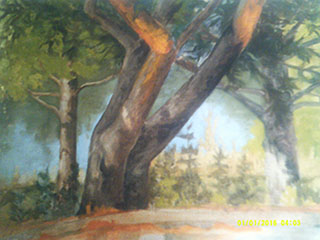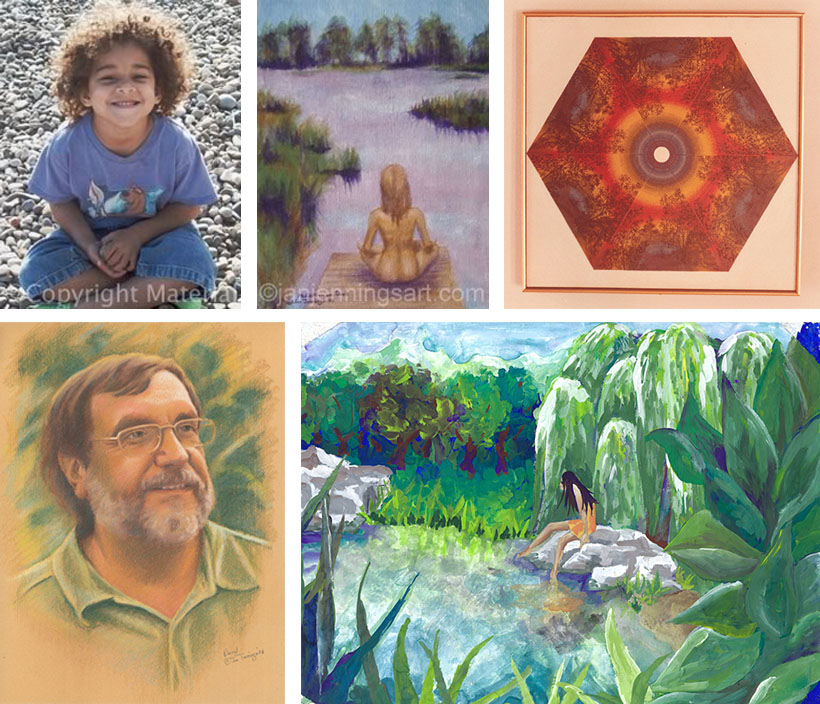One cannot have healing without embracing that which needs to be healed. Meditation provides a pathway in the mind to observe the multitude of painful thoughts and emotions that we all carry that keep us separate from the One and one “an other”. The states of consciousness available through meditation allow for objectivity, so lucidity can shine through the ego’s darkest illusions in daily living.
In a twist of positive irony, by managing our interior, we become masters of our exterior.
Ramone G. Corrales
Growth takes place in a person by working at a deep inner level in a sustained atmosphere of silence.
Ira Progoff
We are dominated by everything with which our self becomes identified. We can dominate, direct and utilize everything from which we disidentify ourselves.
Roberto Assagioli on the process of “disidentification” (letting go of self)

Meditation may be “experienced” not “defined”. The process of meditation may be “discussed and guided”, not “taught”. Meditation is an infinitely changing experience characterized by a gentle unfolding of layers of understanding in each our own personal evolution. It returns us to a state open to the presence of the Creator in all experience, “now”.
In meditation it is more important to “now” than to “know”. Meditation directly contrasts with the ego’s desire to know. The ego uses the left-brain to veto and suppress the right brain’s natural proclivity towards the present, the “now”, of the moment-to-moment meditation experience. We can remember in our mind during meditation, that the ego only wishes to “know” in order to “no” the experience of meditation.
The highly conflicted outer world may be viewed with a highly conflicted inner mind. This geometrically increases the suffering of the viewer. There may be profound pain in this existence, but there does not have to be prolonged suffering. It is only when we avoid facing our pain that we prolong the pain experience and suffer. A fragmented, conflicted inner mind is sensitized to viewing every unresolved shattering conflict in the outer world, perpetuating unnecessary suffering.
The first step towards the release of outer world conflict is the release of our own conflicts within our own inner mind. A type of imprisonment results as images of the world are shared with images in the mind. This may take the form of a narcissistic illusion: “mirror, mirror on the wall, I see my mind on the world, and the world mirrors my mind in all. This must be reality because they both look the same and both are loaded with pain.” These imposed and self-imposed cascades of fear-driven thought lead to an unhealthy dis “ease” of the mind and contribute to dis “ease” in the body.
Meditation is being the observer and that which is being observed. They are one and the same. We can become one with each experience flowing into consciousness. This quiets any movement or influence from past and future events so we are free to experience continuously detached observation and listen only in the ‘now’. In meditation we do not ignore the outer world, as that is merely another form of escapism. Seeking only the transcendent, to the exclusion of what “is” immanent is just another lure into duality where the ego suggests that we try to escape from life’s pain.
“Detachment” is not indifference or separation, but rather a process of viewing all beauty and crassness in both the inner and outer world with a gently focused “now” observation. Practicing detachment removes any desire for change in the outer world. Simultaneously, the more deeply we clearly see and understand the limitations of the outer world, the more deeply we can travel inward in meditation, where there are no limits. The chaos we think we perceive on the outside is merely a mirror of the chaos that we still have to deal with on the inside in our own personal evolution. They are the same. Detachment includes releasing any desire to have “an experience” during meditation. We simply “let go” of effortful analysis, and “let happen” effortless observation. Perceptions then dissolve into gentle understandings.
Perhaps in reading this, the ego may introduce dissonant thoughts that this experience in consciousness is impossible because we would have to spend too much of our time meditating to achieve this. How clever the ego is in using the left hemisphere’s proclivity towards logic and time, to focus on outcome, past, and future events. The ego, in desperate fear, attempts to squelch the right hemisphere’s present orientation and its capacity to observe simultaneously, both images of the outer and inner world.
It may not be that we need to meditate more, but rather, that we never leave the meditative state. ‘Being’ as virtuous as possible in daily living is remaining in a meditative state. The Buddha sited the importance of the “Eightfold Path” and Christ the “Eight Beatitudes” in daily living. Meditation without virtuous living becomes merely a trick to control the mind and emotions, a form of distorted self-hypnosis. Meditation is seeing all that presents, without fragmentation, without separation, without the distortions of one’s own personal fears. Living truly virtuously in daily life is the meditative state of conscious living. Observing all of one’s reactions to the cacophony of prejudices, preconceptions, conditionings, socializations, images and past experiences in others and in our self is meditation. As we recognize the crassness of these discordant noises and illusions, we can participate again in the symphony of creation and hear the whispers of our spirit.

Meditation returns us to the instance before thought, the timeless moment of being where there is a suspension of all wanting, all will that precedes thought. This wordless acknowledgement of “Thy Will be Done”, ranges from single to infinite moments, that we are illuminated by indwelling Spirit. A thoughtless but lucid knowing that we are home “Om”. This is the pure experience of Spirit in the spaces between[1] the melody, between the words and between the images and perceptions of all experience. Simply, Spirit indwelling both the mind and body concurrently. Conscious that neither Body & Mind nor Spirit are separate. Both are home “Om” at once. A sacred awareness in the continuum of consciousness where we clearly know that we are both Spirit and the melody, both Spirit and the words, both Spirit and the images and perceptions of all experiences in mind and body.
Meditation is a freeing expansive experience where the impermanent noises of the world pass and the eternal vibrations of spirit surface in the quietude. In this heightened consciousness we can experience the silent flow. Meditation heals the body and restores the mind by the deepest quiet intelligence in the body, mind and Spirit. The quieted mind in the glow, experiences the gentle, ever-healing, symphonic flow.
[1] The etymology of “between” is be (“am”-ing simultaneously) + twEnonum (two or both). Literally “be both”
Thoughts are energy and attention sends energy to aid the body’s healing process. So too is that true with psychological pain. When we can get past the immediate impulse to deny it, to run away, blame someone, or sugarcoat it with positive platitudes, then we can allow ourselves to feel the pain which is actually healing. The mere act of feeling the pain is sending energy for healing. We can then open ourselves to the inner lessons, so passion, and understanding that come from deep within our self; to see the big picture from an elevated perspective. If you deny what is happening, if you run away from it, it festers and becomes infected. It grows in the dark and controls us in ways we don’t realize because we don’t want to look at it.
Jan Jennings

Listen to “Think Fit: The Power of Your Mind”:
Additional Reading:
“The Surprising Science of How Feelings Help You Think”

 The Buddha
The Buddha Seven Wonders Of The Buddhist World
Seven Wonders Of The Buddhist World

